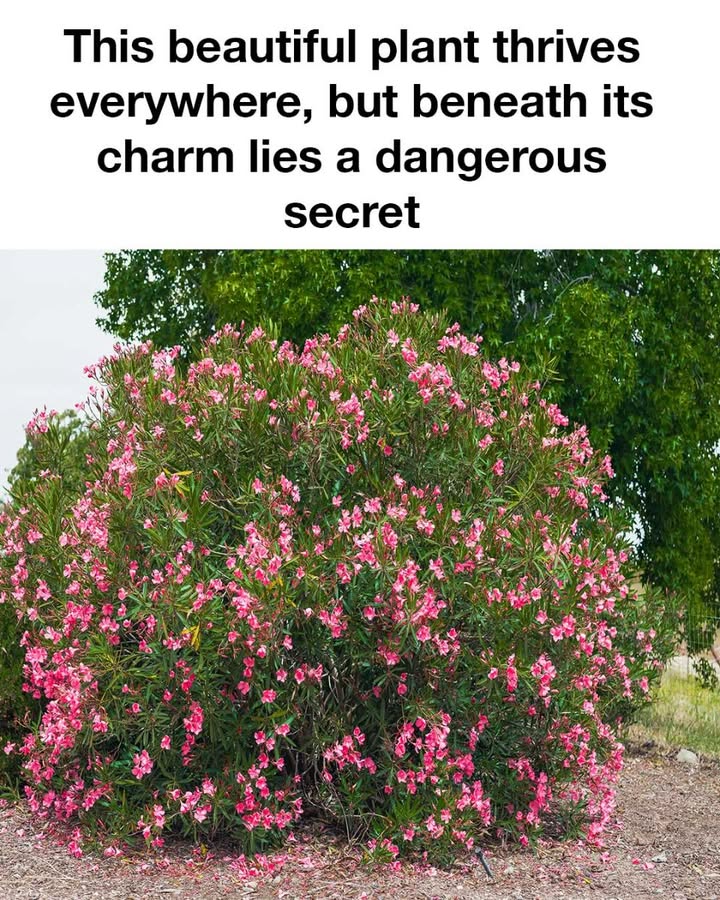This beautiful plant thrives everywhere, but beneath its charm lies a dangerous secret

The Alluring Beauty of Nerium Oleander
Oleander’s appeal lies in its lush, green leaves and clusters of flowers that bloom in shades of pink, red, white, and yellow. The plant’s ability to flower throughout the year in suitable climates adds to its ornamental value. Its dense foliage provides an attractive backdrop for its vibrant blooms, making it a favorite among gardeners looking to add color and structure to their landscapes.
Understanding the Toxicity of Nerium Oleander
Despite its aesthetic appeal, oleander is one of the most poisonous plants known. All parts of the plant, including the leaves, flowers, and stems, contain toxic compounds that can be lethal if ingested. The plant’s toxicity has been known since ancient times, and it has been used historically in various cultures for its poisonous properties.
The Chemical Compounds Behind the Danger
The primary toxic compounds in oleander are cardiac glycosides, specifically oleandrin and neriine. These compounds affect the heart by disrupting the normal function of cardiac cells, leading to potentially fatal heart rhythm disturbances. Even small amounts of oleander can cause severe symptoms, making it a plant that must be handled with caution.